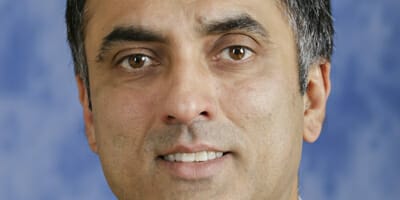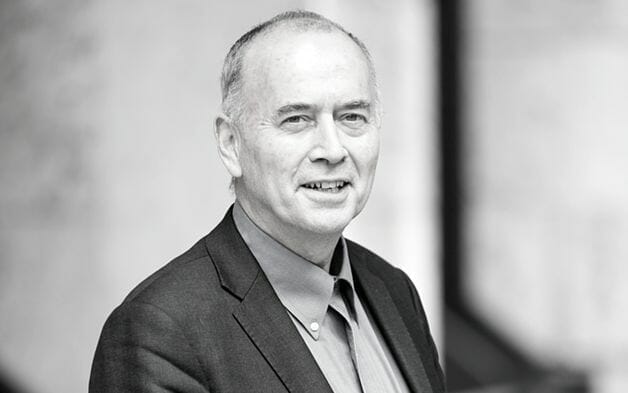Large pension funds might be invested on a truly global basis but their operating models are rarely global structures. Towers Watson argues that asset owners can benefit from a business model that can deliver organisational performance, manages talent and aligns with core missions from multiple operating locations.
Over the last decade, large pension funds and sovereign wealth funds have grown significantly and now dominate the investment industry both by size and influence. Typically, the source of their funds is locally derived from pension obligations or national assets.
But the destination of their funds is completely global in line with the range of investment opportunities becoming highly global and diverse. This has been seen in public markets and in particular alternatives and private markets.
The conclusion is clear. The asset owners must think deeply about how they operate in this global context – now more than ever before. And we suggest that to deserve the title of being a ‘truly global fund’, the asset owner must walk the talk with an effective multi-location global operating model.
The opportunity
Global corporates have been working with this globalisation dynamic for decades and have developed global operating models in response.
These models are ones that large asset owners could learn from and adapt to give them the best chance of competing for and capturing the returns they need. But what is an effective global operating model?
Simply put, this is a business model that can deliver organisational performance from multiple operating locations; a model that manages talent successfully globally; and a model that aligns with the organisation’s context, mission and culture.
In the highly competitive investment market place, research has shown that operating from multiple locations can provide a competitive edge and add substantial value.
This is especially true for asset owners in light of the successful trend towards bolstering internal teams with talent, particularly in the problematic areas of private markets. The advent of advanced operations and technology infrastructure allows an unprecedented level of global integration to occur.
However, a fund operating in multiple locations is likely to face a number of difficult challenges. We cite the principal issue as that of aligning culture, combining the best of the local and global ethos; but the issues extend into the decisions matrices used and how efficiently political capital is allocated; the effectiveness of oversight whenever the activities to be assessed are not local; and the impacts of trust and fairness which generally work best with close proximity.
Goals
In order to address these challenges funds will need a well-designed operating structure with clearly articulated core values, beliefs and norms specifically developed to support diverse global jurisdictions.
An interesting example of this is a fund tied to one region where its mission and obligation is to support that region for long-term social and economic provision. Were it to contemplate opening offices outside its region in large financial centres, its leadership would need to understand to what extent cultural values from their region could be transferred internationally and to what extent any dilution could be tolerated.
Another scenario is where an organisation’s central DNA is deeply wedded to risk management. Were they to contemplate the move to a global operating model, this priority would have to receive the same attention everywhere. Otherwise one wrong deal at a local level as a result of poor engagement with head office would risk serious reputational damage.
While values and culture are soft and intangible, organisational design, roles, responsibilities and processes are not. Asset owners increasingly see the merits of enterprise-wide risk frameworks.
These frameworks are designed to define policies and procedures to mitigate risk from a wide and holistic perspective – investment, operational and reputational risks are covered. They are designed to accommodate the requirements of the regional regulator too.
Such frameworks also make managing people across geographic boundaries a little easier. For example, through standardised HR policies, talented staff can be moved around the globe to enhance the individual’s personal capability with the added benefit at a global level of the cross fertilisation of ideas and thinking.
Where to start?
There is no one-size-fits-all approach and an asset owner’s operating model should reflect its own comparative advantages, priorities and culture.
For organisations wanting to establish an overseas presence, setting up a representative office has usually been the first step to act as an outpost for extending the brand presence into non-domestic markets.
These can be useful for building and enhancing networks and to facilitate face-to-face interaction and whose value should not be underestimated2. While setting up a representative office is a relatively low-cost approach and is unlikely to contradict the culture or identity of the core organisation, a typically constrained scope is likely to limit its ability to deliver significantly improved returns.
At the other end of the scale, fully fledged satellite offices are most effective at replicating the core organisation with the advantage of being semi-autonomous and providing an independent source of return.
This is premised on the satellite office being given the fullest remit to perform. However this is a costly option, with significant infrastructure and talent management demands and may run the risk of compromising the identity and culture of the original organisation. In extremis, a satellite office could become a source of unwanted competition and dilute the benefits usually associated with having a global presence.
Given the challenges at the edges of this spectrum, a blend that has the best of both approaches, may appeal.
These would include having a well-defined and documented split between home and satellite responsibilities and sufficient organisational flexibility to allow tailoring that plays to local strengths. For example different functions – such as research, deal origination, portfolio management, or direct investing – could be emphasised in certain locations depending on where it makes sense geographically.
In addition, individual asset classes – such as private markets, real assets, and hedge funds – could be prioritised in certain offices. So while specialised, focused and competitive overseas offices may be appealing, they come with onerous governance requirements. And one can also challenge from the alignment of interests and the avoidance of duplicating efforts and resources point of view.
Once the decision is made on which approach to take when developing an overseas presence, the discussion will naturally shift towards implementation. This can be particularly difficult – in terms of costs, resources and time – if the chosen route is to establish a new office with a broad remit and significant autonomy. While speed may be attractive in the short term, the challenges around culture, alignment and monitoring could persist.
While there are a number of approaches, completing a spinout or strategically acquiring an external asset management business can offer a potential quick solution. These have been explored recently by some asset owners. One example is that of ABP with New Holland Capital.
So what is the best option when choosing a global operating model? In our view the least risky and easiest to implement approach would be to start with a representative office, review its effectiveness and if successful expand the scope of the operation while exploring a secondary location.
This method, if successful can be used as a blueprint for the establishment of a more autonomous satellite office.
The surprising mantra of success for asset owners is centred on how well they recognise their competitive edge and make sure strategy is congruent with this.
Choosing the most appropriate model for global expansion that aligns with the fund’s governance capabilities is critical; and so is implementing organisational design and an operating structure that gives it a sustainable competitive advantage.
Tej Dosanjh is a senior consultant in Investment Organisational Change at Towers Watson



